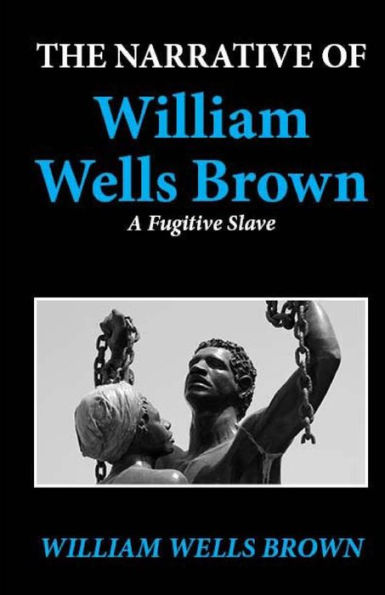There is a saying that each person has strength enough to bear the misfortune of others; this story tests the limits of those words. It is difficult to imagine how owning slaves could ever be rationalized, particularly when the voice of one oppressed human being tells the tale of such inhumanities. The Narrative of William Wells Brown, though short, is emotional reading. Though not as well remembered as Sojourner Truth, Booker T. Washington, Frederick Douglass, or other famous African American's of the Civil War Era, William Wells Brown was one of the major Black political and intellectual leaders of the 19th Century. In addition to being an antislavery activist, he was one of the first to write works of African American history. Brown was among the first African Americans to publish a novel (Clotel, the President's Daughter). Brown's slave narrative provides the usual chilling view of that evil: it also celebrates the ability of Black men and women and their supporters to rise above, outwit and out struggle the slave masters. Clear political foresight is also provided, as Brown's narrative enters into a discourse that was opened by the publication of Uncle Tom's Cabin about what force would bring an end to slavery. Harriet Beecher Stowe put forward the idea of becoming born again in Christ through the evangelical experience inspired by the heroism of slaves, leading to a religious revival that would recognize slavery as the number one sin in the World. Delany proposed a Pan-African cultural revolution to set up a free Black nation that would lead an international slave revolt. Brown's prediction of the solution, and his recognition of the nature of the conflict, not simply between slavery and abolitionism, but between slavery and industrial capitalism, the actual lines of the civil war, was brilliant, prescient, and right.
1108916956
The Narrative of William Wells Brown, a Fugitive Slave
There is a saying that each person has strength enough to bear the misfortune of others; this story tests the limits of those words. It is difficult to imagine how owning slaves could ever be rationalized, particularly when the voice of one oppressed human being tells the tale of such inhumanities. The Narrative of William Wells Brown, though short, is emotional reading. Though not as well remembered as Sojourner Truth, Booker T. Washington, Frederick Douglass, or other famous African American's of the Civil War Era, William Wells Brown was one of the major Black political and intellectual leaders of the 19th Century. In addition to being an antislavery activist, he was one of the first to write works of African American history. Brown was among the first African Americans to publish a novel (Clotel, the President's Daughter). Brown's slave narrative provides the usual chilling view of that evil: it also celebrates the ability of Black men and women and their supporters to rise above, outwit and out struggle the slave masters. Clear political foresight is also provided, as Brown's narrative enters into a discourse that was opened by the publication of Uncle Tom's Cabin about what force would bring an end to slavery. Harriet Beecher Stowe put forward the idea of becoming born again in Christ through the evangelical experience inspired by the heroism of slaves, leading to a religious revival that would recognize slavery as the number one sin in the World. Delany proposed a Pan-African cultural revolution to set up a free Black nation that would lead an international slave revolt. Brown's prediction of the solution, and his recognition of the nature of the conflict, not simply between slavery and abolitionism, but between slavery and industrial capitalism, the actual lines of the civil war, was brilliant, prescient, and right.
7.99
In Stock
5
1

The Narrative of William Wells Brown, a Fugitive Slave
62
The Narrative of William Wells Brown, a Fugitive Slave
62Paperback(New Edition)
$7.99
7.99
In Stock

Product Details
| ISBN-13: | 9781481829168 |
|---|---|
| Publisher: | CreateSpace Publishing |
| Publication date: | 12/27/2012 |
| Edition description: | New Edition |
| Pages: | 62 |
| Product dimensions: | 5.56(w) x 8.50(h) x 0.16(d) |
About the Author
From the B&N Reads Blog
